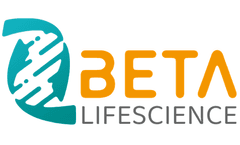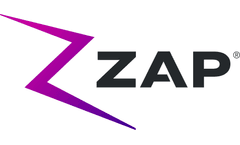Brain Disorder Articles & Analysis: Older
12 articles found
If not released properly, MMP-9 can lead to a variety of brain disorders including epilepsy, schizophrenia, autism, brain injury, stroke, neurodegeneration, pain, and brain tumors. The most important mechanism of action of MMP-9 in brain disorders appears to be the involvement of ...
The process of iPSC differentiation to neurons and neuronal cells is of special importance for neurobiology and related disorders, considering the dearth of clinically relevant in vitro models available for research, drug screening and development, as well as the lack of therapy to reverse neuronal damage. Benefits and advantages of iPSC differentiation to neural stem cells ...
Emerging roles of dysregulated adenosine homeostasis in brain disorders with a specific focus on neurodegenerative diseases. ...
Several improvements support the hypothesis that dynamic standing using the Innowalk is effective as an add-on to standard therapy in the treatment of children and young people with severe motor impairments. The study included 46 patients where 50% were diagnosed with cerebral palsy and 50% with diverse syndromes. The results show improvements on: Passive assisted motion (79%) Stimulation ...
Introducing Beacon Biosignals: a neurotechnology company founded to develop machine learning-enabled EEG neurobiomarkers and accelerate precision medicine for any disease state affecting the brain Founded by MD/PhDs and engineers from Harvard and MIT, Beacon is propelled by the vision of a computing platform designed to scale the interrogation of large brain ...
Newton will be showcasing ni20, a dynamic spinout company from his Oxford team’s research, which is making life better for patients who suffer from debilitating brain diseases and disorders by restoring their abilities. Specifically, Dr. Howard and his team members from Oxford and MIT are developing a revolutionary brain-computer interface ...
1 billion people around the world are currently suffering from neurological disorders, and the number is growing by the day. The COVID-19 pandemic has had a significant negative impact on the healthcare system’s ability to effectively diagnose and treat these individuals. ...
Scientists at Cornell University developed a technique for imaging the brain of an adult zebrafish, with the goal of better understanding human brain disorders. ...
ZAP-X®, a new,innovative frameless radiosurgical device, maybe an attractive platform for the treatment of TNand other functional brain disorders. Here, we compared the dosimetry of ZAP-X plans for asingle patient to that generated by a well-established dedicated radiosurgery device, theCyberKnife. ...
Considering the on-going need to take care of the patients with brain tumours and other brain lesions, we aim to use funds to support our existing neurosurgical diagnostics business in the US and European markets. ...
They are injected into the body to facilitate those targeted and whole body scans to enable doctors to determine (without the use of invasive, risky and costly exploratory surgery) whether the heart and cardiovascular system has adequate blood flow; whether cancer has spread to a patient’s bones or elsewhere; and to help diagnose gallbladder, kidney, thyroid, nerve, brain ...
The Article Teams from the AP-HP (Paris public hospitals network), in collaboration with researchers from the Brain & Spine Institute (ICM), Inserm, CNRS and UPMC, have worked with the teams from METAFORA biosystems to diagnose a rare but treatable condition called the Glut1 deficiency syndrome or De Vivo disease. This metabolic disorder impairs ...












